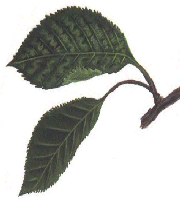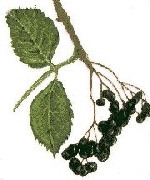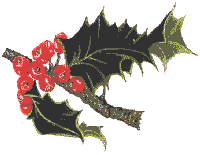
 |
 |
 |
 |
 |
What
Trees might you find in a hedge?
Flowers | Planting | Trees
Trees
Cherry - Wild

Elder
Elder is commonly viewed as a pest. It’s soft-centred and brittle branches can be hollowed out to make flutes (the Greek sambucus means ‘flute’) and Native Indians call the Elder the ‘flute tree’. It’s leaves resemble the Ash, though not related. The flowers are highly fragrant and have some cosmetic applications. The berries attract many birds and mammals, including humans who make it into a sweet wine. Elder thrives on disturbed ground and is common in cities. It also occurs in poorly managed hedgerows.
Elm - Wych
Previously, Elms were often planted in hedgerows, along streets, avenues and canals. Elm wood is relatively strong and is easily shaped. It is used in making chair frames, wheels and coffins. Immersed in water it lasts a very long time, many cities once used hollowed Elms as water-pipes and the wood is still used in barge and boat building. A tall tree, it attracts a wide variety of insect life. Unfortunately one of these insects, a beetle (Scolytus spp.) is responsible for the tree’s decline during the 1970’s because it transports the fungus which causes Dutch Elm disease (Ceratocystis ulmi).
The beetle does not seriously affect the Elm before it is 15 years old, so establishing a coppice regime every 15 years should help its survival! Wych Elm, however, is relatively resistant to the disease, and found throughout Ireland. The large asymmetric leaves are easily distinguished by their rough texture, and, in Winter the twigs bear single, large, deep brown buds. The winged seeds are small and easily dispersed by wind but they are readily eaten by birds and small mammals.
Wych Elms do not sucker like many other trees and it’s trunk has a habit of forking. Elm wood makes excellent archery bows and it’s strong roots make it highly resistant to stormy weather.
Guelder - Rose
Related to the Elder, the Guelder - rose is not a rose. A small tree, the Guelder rose thrives on wet soil, being cultivated in the wet soil of the Guelder region, Netherlands and is mainly found in hedgerows in Ireland. With similar flower clusters to the Elder, the resulting bright crimson-red ‘rose’ fruit are poisonous to humans, and barely edible to some birds. Many insects are attracted to the tree and all of it’s parts have been used in some form of medicinal or cosmetic manufacturing.
Holly

The Holly Tree
A tradition, lasting since pre-Christian times, that is still practised by many in Ireland is decorating the house with Holly sprigs at Christmas-time. The bright berries warded off evil spirits. Like rowan, Holly was planted near houses and it was believed that it protected the occupants from lightning.
Holly wood is fine grained and suited to engraving and turning. It is strong enough to be used in hand tools. Died black, it was used as an ebony substitute, especially for making chess pieces. More at home as a woodland understory tree, Holly is used in hedgerows for it’s spiky deterring leaves, though with age the leaves become smoother.
An evergreen plant, Holly is resilient and long-lived. It copes well with pollution and clipping, and blocks noise. This makes it well suited to urban and garden planting. There are not many insects associated with Holly, it is the berries which attract attention, especially from members of the Thrush family. The prickly leaves provide cover and protection for small birds in bare Winter. Numerous cultivated varieties have been produced.
Back to Previous Trees Page | Back to the home page | More Trees